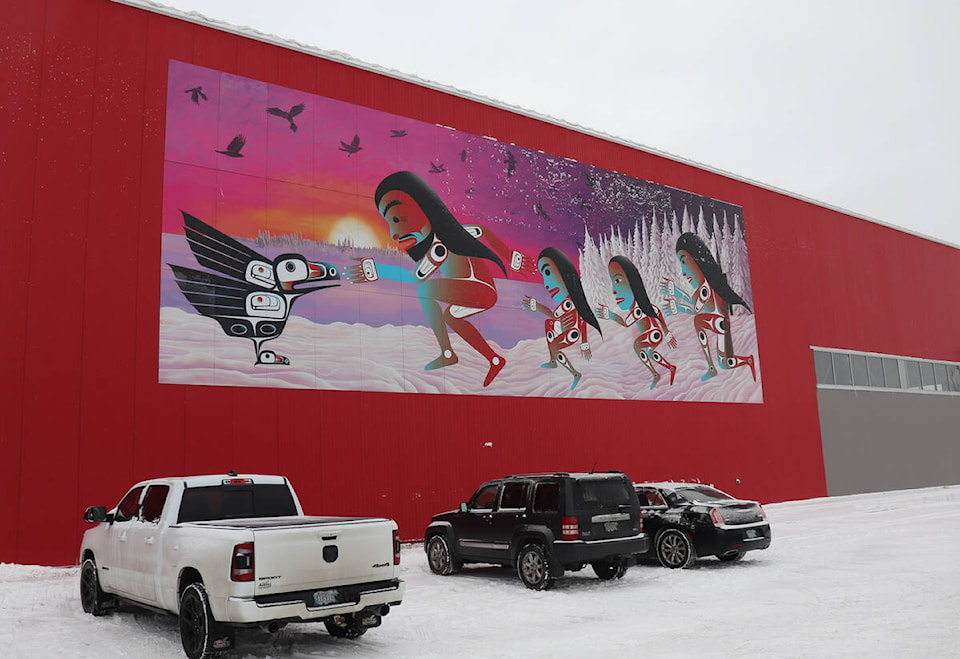They know arts spending is economic development spending.
They know that, right?
Matthew Grogono and probably others in the Yellowknife Artists Co-operative (YAC) are with it. Grogono, the group’s president, penned a letter in the Nov. 12 Yellowknifer drawing attention to the disparity between arts and sports funding and arts and sports performance in the Northwest Territories, and the capital specifically.
Click here to read Grogono’s letter
It received such a response online (Grogono said it attracted around 10,000 impressions when he shared it through his personal Facebook account and that of the YAC) he’s submitted another (read it on page 7). The thoughts are provoked at an opportune time, as Yellowknife city councillors get down to crafting the 2022 municipal budget.
The National Endowment for the Arts says that arts and culture contributed 4.3 per cent of the entire gross domestic product (GDP) of the United States in 2019. That represents nearly $1 trillion worth of economic activity, and is more than what is generated by industries such as construction, transportation/warehousing or agriculture – it’s about double what mining produces in that country. The arts sector is also growing at a clip of three per cent a year in the U.S., or slightly faster than the broader economy.
Click here to check out the National Endowment for the Arts data
Click here to check out the U.S. Department of Commerce data
Click here to check out data on mining in the United States
But Canada and the North are not Hollywood, you cry. Well, California does have a lot of dollars swirling around the arts, but in New York, the sector contributed a similar share of the state economy (7.4 per cent on the West Coast versus 7.0 per cent in the Empire State). Meanwhile, the District of Columbia, where the same figure is swollen by government spending and broadcasting to 8.8 per cent, put them both to shame (all in 2019 and according to the economic analysis bureau of the U.S. Department of Commerce).
In Canada, “culture industries” jammed $58.9 billion into the economy in 2017 — not unlike a Phish tribute at an open mic night — according to the Toronto-based Canadian Art Foundation. That represents 2.8 per cent of GDP, or more than the economic contributions of agriculture (huh?), accommodation and food services (really?), fishing and hunting (come on) and forestry (blasphemy!).
And, in a zinger the Grogono camp is sure to share on social media, culture industries, according to the Statistics Canada data boiled down by the Canadian Art Foundation, support nearly six times as many jobs as do sports industries: 715,400 versus 125,500.
It’s also worth pointing out that unlike the American data above, the Canadian figures don’t include the impact of government-run organizations operating in the culture sector: that apparently represents another $7.6 billion of activity.
And the last tidbit: Nunavut leads the nation in terms of the impact of the arts per capita: $2,055, compared to, for example, $1,896 in Ontario.
Click here to check out data from the Canadian Art Foundation
So where does this leave the arts in Yellowknife? According to “Council’s Goals” as described in the draft 2022 budget, creating a new arts master plan is the last of four objectives under the third of four goals — “ensuring a high quality of life for all, including future generations.”
Goal No. 1 is “growing and diversifying the economy. The top objective? “Foster a robust and diversified tourism sector.”
Dollars have to be stretched at every level of government budget-making but at the municipal level, they’re almost expected to do more than one thing at once. Spending them supporting the arts may be the best way to fit two hats on a loonie.
There is no reason for those two goals to be so far apart. Perhaps there is room for a creative solution here?
